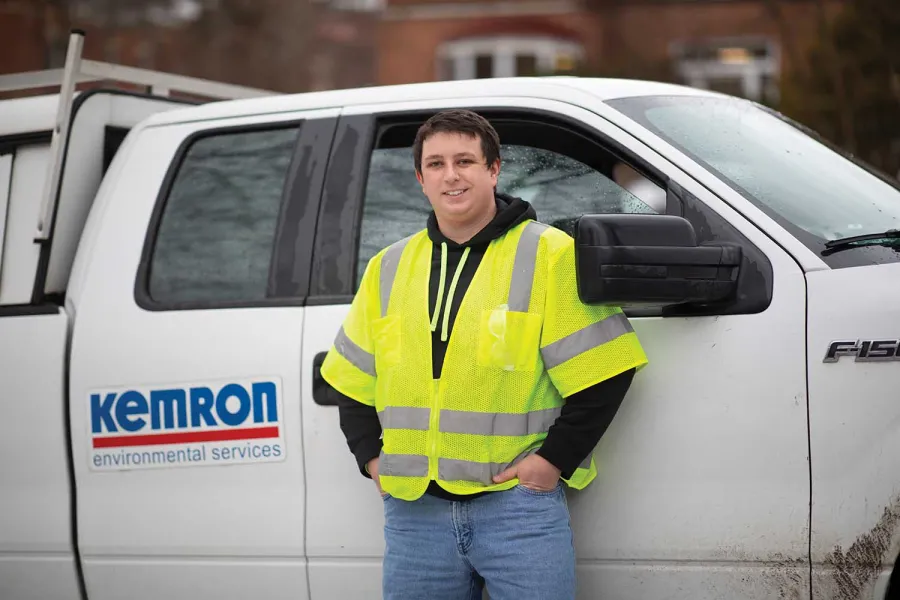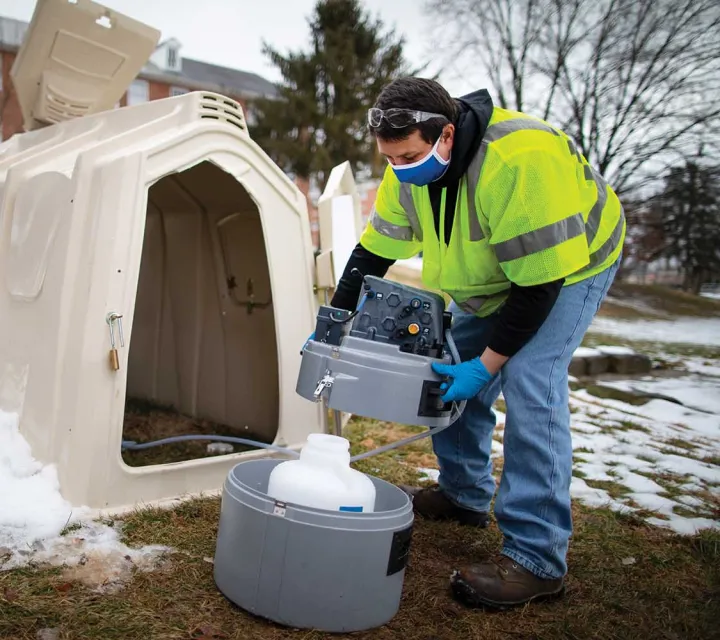Twice a week throughout Spring semester, Bobby Casto ’16 spends four hours trying to help Marietta College prevent a mass COVID-19 outbreak.
Casto, who majored in Geology and earned a minor in Environmental Science, collects wastewater samples from five different sites on campus for his company, Kemron Environmental, which does remediation work throughout the United States. Marietta College’s testing sites coincide with the sewer systems outside of the residence halls: Fayerweather, McCoy, Harrison, Marietta/Newton halls, and Russell/Beach/Webster halls.
“Basically, we are getting a collection from these five sites and determining traceable amounts of COVID-19 in the wastewater from people who live in these dorms,” Casto says. “For COVID-19, this is actually relatively new. This is first time we’ve done it at Kemron, so it’s kind of a pioneering project for everybody here. … Doing this, you can actually determine up to five days earlier, prior to symptoms, if there is COVID in these isolated populations. It’s basically an early warning sign, and it will help your governing body decide what’s the best course of action.”
The College received grant funding to participate in the Ohio Department of Health’s COVID-19 wastewater sampling study, which shows that non-infectious RNA can be present in the feces of symptomatic and asymptomatic infected people. The results are shared with researchers at Ohio State University and the ODH sponsors of this initiative, says Fred Smith, Director of Marietta’s Physical Plant.

Bobby Casto ’16 focuses on groundwater and soil sampling for Kemron Environmental, the remediation company he’s worked for since graduating from Marietta.
“Because our flow rates at the manholes are relatively low compared the larger university residence halls in the study, we have been advised that the gene copies in some of our samples have been below the limit of quantification,” Smith says, adding that the researchers have been asked if the College’s results are in a range that would make the sampling methods valid, what levels should prompt the College to consider taking action, and if any of the results are actionable.
Smith says he also informed OSU’s research team that the College isolates and quarantines students in their residence halls and asked them how that may affect our test results. The researchers informed the College that “there is very limited amount of data on the COVID RNA shedding rates, but it is possible for people to shed the RNA in feces up to 30 days after the symptoms. It is believed that the highest shedding rate is close to the peak of the disease (when people show symptoms) and then the shedding rate goes down. But ... there is not much data to characterize the shedding curve, especially looking at asymptomatic, pre-symptomatic or symptomatic people.”
Casto is excited to be able to work with the College to help his alma mater navigate its way through the pandemic and to help keep campus a safe place to be.
“It’s actually wonderful being able to come back to Marietta and help them out in a way,” Casto says. “They gave me so much, and I’m glad to be able to give back in some way.”
